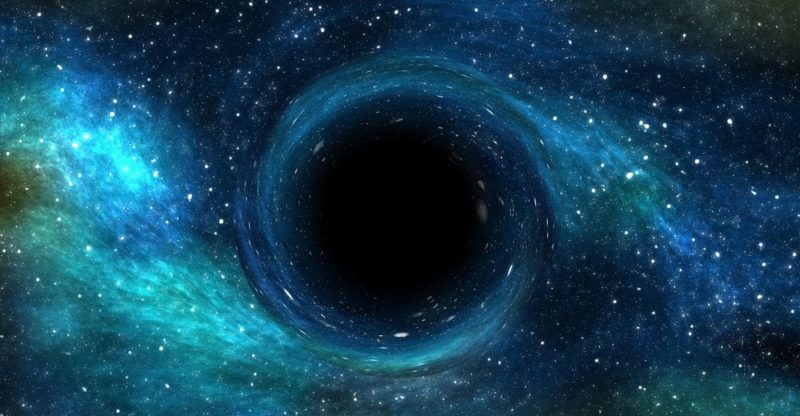We explain what the Milky Way is, how it originated, and the dimensions it presents. Also, what are its characteristics and structure.
What is the Milky Way?
It is known as the Milky Way to the galaxy where our Solar System is located and, therefore, our planet.
It is found in a cluster of about forty different galaxies called the Local Cluster, along with other renowned galaxies such as Andromeda. It is the second brightest of the whole set and, according to some studies, it could be the most massive as well.
The Milky Way is visible to the naked eye from our planet, as a blurry white band of light that is found throughout the celestial sphere.
It is brightest towards its center, towards the constellation Sagittarius. This has allowed its observation since ancient times when it was thought to contain all the stars in the universe.
In the seventeenth century Galileo Galilei was the first to observe it with a telescope and realize that it was composed of a cluster of stars that give it the shape of a nebula. However, it would be Edwin Hubble in the 20th century who delimited it and studied it in greater depth.
Origin of the name Milky Way
The name of our galaxy has a mythological origin : in ancient Greece they thought that Hercules (the hero and favorite demigod of the father god Zeus, the fruit of his illegitimate union with a mortal named Alcmena) had been taken a few months after he was born. to Olympus by the god Hermes, where he found the goddess Hera, Zeus's jealous wife, asleep.
Hermes then ordered Hercules to suck the divine milk of the goddess , which he did with such force that he hurt her and awoke on the spot, causing the milk to spill into the sky. Hence, the name "Milky Way" means "milk road" in Latin.
Dimensions of the Milky Way

Our galaxy has an estimated mean diameter of 100,000 light-years, equivalent to almost one and a half trillion kilometers (9,480 astronomical units).
It is estimated that 100 to 400 billion different stars inhabit it, giving it a total mass of 10 12 solar masses. Also, it is shaped like a convex lens.
Galaxy type
The Milky Way is a barred spiral galaxy , that is, it has a central bar of bright stars from which the "arms" of the spiral are born. There are other types of galaxy according to their shape, such as elliptical or irregular.
Parts of the Milky Way

Our galaxy can be divided into three parts: halo, disk, and bulb.
- Halo. It is a spherical-shaped structure that surrounds the galaxy and has a low concentration of stars and gas clouds . Instead it contains many globular clusters, clusters of old stars that orbit the galaxy like satellites . It also features abundant dark matter, which gravitationally influences the galaxy's motion.
- Disk. Most of the young stars are contained in the disk, since it is the region with the highest gas content and where the star birth processes still take place. The disk contains the arms of the galactic spiral, about eight in total, and it is attached to the bulge of the galaxy by the star bar inside.
- Bulb. This is the central region of the galaxy, with the highest stellar density. It has a flattened spherical shape and has a rotary motion similar to that of a rigid solid . However, many investigations question the existence of the bulb and point more to a pseudobulb due to the formation of a star bar in its center.
Satellite galaxies
Some other galaxies orbit around ours, such as the Magellanic Clouds , two dwarf galaxies also belonging to the Local Group, or other much smaller elliptical dwarf galaxies, some of which are so close to the Milky Way that they are being absorbed by its inside.
Movement of the Milky Way

As its elliptical shape suggests, the galaxy rotates on its axis at a speed of 270 kilometers per second , completing one revolution on its axis every 225 million years (from the perspective of our Sun ).
Depending on how close one is to the nucleus, it will rotate faster or slower around the galactic axis.
The galactic center

What is in the bright center of our galaxy is unknown , which we cannot observe due to opaque materials and cold gases that prevent access to light.
Some astronomers speculate that there is a large black hole of 2.6 million solar masses inside it.
In any case, the galactic center measures about 8,000 light years in diameter and its stars are close together, much closer than those of the elliptical arms.
Solar System Location

Our Solar System is located on the outskirts of the galaxy , about 28,000 light years from the center, in one of the arms of the spiral of the galactic disk. If the galaxy were a big city, we would live in the suburbs.
Origin of the Milky Way
It is thought that the formation of our galaxy began shortly after the Big Bang that originated the universe , as a densification of cosmic material that gave rise to globular clusters (still present in the halo of the galaxy).
Other accumulations of stars and eventually other young galaxies began to join this proto-galaxy , thus adding a greater stellar mass.
Eventually the future Milky Way would have enough mass to start rotating on its axis rather quickly , collapsing the gaseous medium into a flat, spiral-shaped disk.
The Milky Way in culture

The Milky Way has been present in the human imagination about the sky and space since forever. The ancient Aztecs saw in it the Mixcoátl cloud serpent, and the Vikings thought it was the door to Valhalla, the kingdom of warriors who fell in combat.
It was also used by Spanish pilgrims to get to Santiago de Compostela, which is why it is often referred to as the “Camino de Santiago”.
It has often been represented in the Fine Arts, as is the case in the painting The Birth of the Milky Way by Rubens, who makes use of the myth from which the name of our galaxy comes.
The above content published at Collaborative Research Group is for informational and educational purposes only and has been developed by referring to reliable sources and recommendations from technology experts. We do not have any contact with official entities nor do we intend to replace the information that they emit.
Anas is an editor of a prestigious publishing company in the United States. She studied Mathematics in Arizona. Anas is also a teacher and one of her long-term goals is to build an institution that offers free education to everyone who are financially not stable. .
Leave a reply
Your email address will not be published. Required fields are marked *Recent post

Sport: What Is It, Types, Risks, Features, Characteristics and Examples

Dogs: Emergence, Features, Characteristics, Feeding and Breeds

Story: Definition, Elements, Structure, Features and Characteristics

